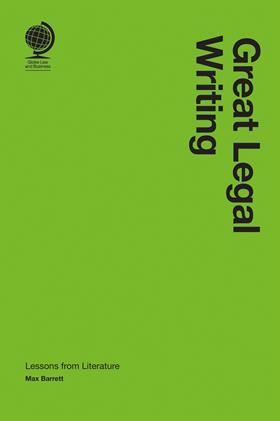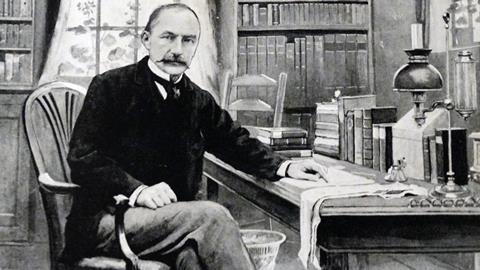Removing humanity from art is a ‘race to the bottom’
Great Legal Writing: Lessons from Literature
Max Barrett
£75, Globe Law and Business
★★★★★
Every now and then I have the privilege of reading a book in which the author’s breadth of knowledge and elegance of prose take my breath away. Great Legal Writing by Max Barrett, otherwise known as Mr Justice Barrett, is one such rare find. With a first-class honours MA in English Literature and a PhD in Law, Justice Barrett is one of Ireland’s most widely published judges and his latest book demonstrates his incredible intelligence and breadth of reading.
The premise of Great Legal Writing is that by examining the words and insights of authors whose books and essays have made it into the coveted realms of the ‘classics’ – for example, Henry James, Virginia Woolf and William Hazlitt – legal writers can learn how to ‘approach the complexities of writing so as to make one’s prose finer’.
Take for instance the chapter on EM Forster. Examining his book Aspects of the Novel, Justice Barrett offers that legal judgments and writing are concerned with human stories that are as engaging as any told via a book or play. Therefore, to hold the reader’s interest or make a persuasive legal argument, a writer must follow Forster’s advice and install in the reader the desire to know what happens next. Lord Denning, another extraordinary storyteller who was also exceptionally well-read, had a similar opinion, writing in his autobiographical work The Family Story that ‘if you are to persuade your… readers… you must cultivate a style which commands attention’.

Turning to the chapter on Thomas Hardy (pictured above), the author examines the tricky concept of originality and creativity when it comes to writing legal judgments and texts. Hardy wrote of his concern that the magazines and circulating libraries of his time were all aimed at ‘middlebrow reading’ and this style dominated the literary space.
Justice Barrett states that originality and creativity in legal writing is ‘frowned upon by some as having a destabilising effect on the law’. However, he points out that the danger of rejecting judgments and texts that fail to follow the accepted style risks stifling opportunities to evolve a more modern technique of legal writing that holds the attention of contemporary readers.
It would be a mistake to think this book is merely an examination of great authors and how their thoughts on writing can add to the creation of modern legal prose. Justice Barrett provides practical advice on how to craft effective legal writing, stating the importance of meticulous research, legal analysis, brevity, and giving a solution to everyday problems. At the end of the book, he provides a code of legal writing which consolidates the main points of the text.
The launch of ChatGPT last year brings the threat of valuable, well-researched, elegant, and empathetic writing in all disciplines being replaced with shallow, inaccurate, unengaging text. Justice Barrett’s book reminds us that great legal writing is a lifelong craft which must be valued in order to protect it from the inevitable ‘race to the bottom’ which is the predictable outcome of removing humanity from art.
Corinne McKenna is the founder and director of The Legal Copywriting Company
































1 Reader's comment